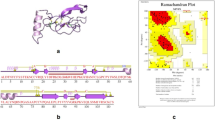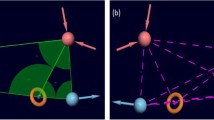Abstract
Cervical cancer is a significant cause of morbidity and mortality in women worldwide. Despite the availability of effective therapies, the development of drug resistance and adverse side effects remain significant challenges in cervical cancer treatment. Thus, repurposing existing drugs as multitargeted therapies for cervical cancer is an attractive approach. In this study, we extensively screened the complete prepared FDA-approved drugs and identified the repurposing potential of taxifolin, a flavonoid with known antioxidant and anti-inflammatory properties, as a multitargeted therapy for cervical cancer. We performed a computational analysis using molecular docking with various sampling algorithms, namely HTVS, SP, and XP algorithms, for robust sampling pose and filtered with MM/GBSA analysis to determine the binding affinity of taxifolin with potential targets involved in cervical cancer, such as Symmetric Mad2 Dimer, replication initiation factor MCM10-ID, TPX2, DNA polymerase epsilon B-subunit, human TBK1, and alpha-v beta-8. We then conducted MD simulations to investigate the stability and conformational changes of the complex formed between taxifolin and the mentioned proteins. Our results suggest that taxifolin has a high binding affinity ranging from − 6.094 to − 9.558 kcal/mol, indicating its potential as a multitargeted therapy for cervical cancer. Furthermore, interaction fingerprints, pharmacokinetics and MD simulations revealed that the Taxifolin-target complexes remained stable over the simulation period, indicating that taxifolin may bind to the targets for an extended period. Our study suggests that taxifolin has the potential as a multitargeted therapy for cervical cancer, and further experimental studies are necessary to validate our findings.







Similar content being viewed by others
Data availability
No associated data.
References
Ahmad S, et al. In-silico analysis reveals quinic acid as a multitargeted inhibitor against cervical cancer. J Biomol Struct Dyn. 2022. https://doi.org/10.1080/07391102.2022.2146202.
Chen J, et al. Nanotechnology in the management of cervical cancer. Rev Med Virol. 2015;25:72–83. https://doi.org/10.1002/rmv.1825.
Cohen PA, et al. Cervical cancer. The Lancet. 2019;393(10167):169–82. https://doi.org/10.1016/s0140-6736(18)32470-x.
Eddy DM. Screening for cervical cancer. Ann Intern Med. 1990;113(3):214–26. https://doi.org/10.7326/0003-4819-113-3-214.
Ghosh S, et al. Targeted drug delivery in cervical cancer: current perspectives. Eur J Pharmacol. 2022;917:174751. https://doi.org/10.1016/j.ejphar.2022.174751.
Gupta S, Gupta MK. Possible role of nanocarriers in drug delivery against cervical cancer. Nano Rev Exp. 2017;8(1):1335567.
Ordikhani F, et al. Drug delivery approaches for the treatment of cervical cancer. Pharmaceutics. 2016;8(3):23.
Ahmad S, et al. Nanoinformatics and nanomodeling: recent developments in computational nanodrug design and delivery systems. In: Emerging nanotechnologies for medical applications. Amsterdam: Elsevier; 2023. p. 297–332.
Ahmad S, et al. Illustrious implications of nature-inspired computing methods in therapeutics and computer-aided drug design. In: Nature-inspired intelligent computing techniques in bioinformatics. Singapore: Springer Nature Singapore; 2022. p. 293–308.
Alturki NA, et al. In-silico screening and molecular dynamics simulation of drug bank experimental compounds against SARS-CoV-2. Molecules. 2022;27(14):4391.
Alghamdi YS, et al. Unveiling the multitargeted potential of N-(4-Aminobutanoyl)-S-(4-methoxybenzyl)-l-cysteinylglycine (NSL-CG) against SARS CoV-2: a virtual screening and molecular dynamics simulation study. J Biomol Struct Dyn. 2022. https://doi.org/10.1080/07391102.2022.2110158.
Alzamami A, et al. Hemi-Babim and Fenoterol as potential inhibitors of MPro and papain-like protease against SARS-CoV-2: an in-silico study. Medicina. 2022;58(4):515.
Daina A, Michielin O, Zoete V. SwissADME: a free web tool to evaluate pharmacokinetics, drug-likeness and medicinal chemistry friendliness of small molecules. Sci Rep. 2017;7(1):42717.
Hou J, et al. In silico analysis of ACE2 receptor to find potential herbal drugs in COVID-19 associated neurological dysfunctions. Nat Prod Commun. 2022. https://doi.org/10.1177/1934578X221118549.
Karwasra R, et al. The incipient role of computational intelligence in oncology: drug designing, discovery, and development. In: Computational intelligence in oncology. Singapore: Springer; 2022. p. 369–84.
Tripathi MK, et al. Fundamentals of molecular modeling in drug design. In: Computer aided drug design (CADD): from ligand-based methods to structure-based approaches. Amsterdam: Elsevier; 2022. p. 125–55.
Ahmad S, et al. Multitargeted molecular dynamic understanding of butoxypheser against SARS-CoV-2: an in silico study. Nat Prod Commun. 2022. https://doi.org/10.1177/1934578X221115499.
Ahmad S, et al. Mobile technology solution for COVID-19: surveillance and prevention. In: Computational intelligence methods in COVID-19: Surveillance, prevention, prediction and diagnosis. Singapore: Springer; 2021. p. 79–108.
Ahmad S, et al. Therapeutic protein-based vaccines. In: Protein-based therapeutics. Singapore: Springer; 2023. p. 355–84.
Ahmad S, et al. Reporting dinaciclib and theodrenaline as a multitargeted inhibitor against SARS-CoV-2: an in-silico study. J Biomol Struct Dyn. 2022. https://doi.org/10.1080/07391102.2022.2060308.
Yadav MK, et al. Predictive modeling and therapeutic repurposing of natural compounds against the receptor-binding domain of SARS-CoV-2. J Biomol Struct Dyn. 2022. https://doi.org/10.1080/07391102.2021.2021993.
Ahmad S, et al. Molecular dynamics simulation and docking analysis of NF-κB protein binding with sulindac acid. Bioinformation. 2022;18(3):170–9.
Balasubramanian B, et al. Exosomes as an emerging nanoplatform for functional therapeutics. In: Handbook on nanobiomaterials for therapeutics and diagnostic applications. Amsterdam: Elsevier; 2021. p. 483–98.
Famuyiwa SO, et al. Comprehensive computational studies of naturally occurring Kuguacins as antidiabetic agents by targeting Visfatin. Chem Afr. 2023. https://doi.org/10.1007/s42250-023-00604-8.
Karwasra R, et al. Macrophage-targeted punicalagin nanoengineering to alleviate methotrexate-induced neutropenia: a molecular docking, DFT, and MD simulation analysis. Molecules. 2022;27(18):6034.
Kaul T, et al. Probing the effect of a plus 1bp frameshift mutation in protein-DNA interface of domestication gene, NAMB1, in wheat. J Biomol Struct Dyn. 2019;38(12):3633–47.
Khan FN, Ahmad S, Raza K. Clinical applications of next-generation sequence analysis in acute myelogenous leukemia. In: Translational bioinformatics applications in healthcare. Boca Raton: CRC Press; 2021.
Khan FN, et al. A review on predictive systems and data models for covid-19. In: Computational intelligence methods in COVID-19: surveillance, prevention, prediction and diagnosis. Singapore: Springer; 2021. p. 123–64.
Ramlal A, et al. From molecules to patients: the clinical applications of biological databases and electronic health records. In: Translational bioinformatics in healthcare and medicine. Amsterdam: Elsevier; 2021. p. 107–25.
Shah AA, et al. Structure-based virtual screening, molecular docking, molecular dynamics simulation, and metabolic reactivity studies of quinazoline derivatives for their anti-EGFR activity against tumor angiogenesis. Curr Med Chem. 2023. https://doi.org/10.2174/0929867330666230309143711.
Sheikh K, et al. Consequential innovations in nature-inspired intelligent computing techniques for biomarkers and potential therapeutics identification. In: Nature-inspired intelligent computing techniques in bioinformatics. Singapore: Springer Nature Singapore; 2022. p. 247–74.
Tarique M, et al. Novel severe acute respiratory syndrome coronavirus 2 (SARS-CoV2) and other coronaviruses: a genome-wide comparative annotation and analysis. Mol Cell Biochem. 2021;476:2203–17.
Yang M, et al. Insights into mad2 regulation in the spindle checkpoint revealed by the crystal structure of the symmetric mad2 dimer. PLoS Biol. 2008;6(3):e50.
Warren EM, et al. Physical interactions between Mcm10, DNA, and DNA polymerase α. J Biol Chem. 2009;284(36):24662–72.
Giesecke A, Stewart M. Novel binding of the mitotic regulator TPX2 (target protein for Xenopus kinesin-like protein 2) to importin-α. J Biol Chem. 2010;285(23):17628–35.
Suwa Y, et al. Crystal structure of the human Pol α B subunit in complex with the C-terminal domain of the catalytic subunit. J Biol Chem. 2015;290(23):14328–37.
Zhang C, et al. Structural basis of STING binding with and phosphorylation by TBK1. Nature. 2019;567(7748):394–8.
Campbell MG, et al. Cryo-EM reveals integrin-mediated TGF-β activation without release from latent TGF-β. Cell. 2020;180(3):490-501.e16.
Release S. Protein preparation wizard. New York: Epik, Schrödinger, LLC; 2016. p. 2018–3.
Release S. 2017 Maestro. New York: Schrödinger, LLC; 2017.
Release S. Epik (2020). New York: Schrödinger Release; 2020. p. 1.
Schrödinger P. Version 3.5. New York: LLC; 2014.
Lu C, et al. OPLS4: Improving force field accuracy on challenging regimes of chemical space. J Chem Theory Comput. 2021;17(7):4291–300.
Release S. LigPrep. New York: Schrödinger, LLC; 2017.
Release S. Glide. New York: Schrödinger, LLC; 2018. p. 757.
Release S. QikProp. New York: Schrödinger, LLC; 2020. p. 329.
Lipinski CA. Lead-and drug-like compounds: the rule-of-five revolution. Drug Discovery Today Technol. 2004;1(4):337–41.
Release S. Desmond molecular dynamics system, DE Shaw research. In: Maestro-desmond interoperability tools. New York: Schrödinger; 2017.
McDonald I. NpT-ensemble Monte Carlo calculations for binary liquid mixtures. Mol Phys. 1972;23(1):41–58.
Funding
The authors are thankful to the Deanship of Scientific Research at Najran University for funding this work under the General Research Funding program grant code number (NU/DRP/MRC/12/8).
Author information
Authors and Affiliations
Corresponding author
Ethics declarations
Competing interest
The authors declare no competing or conflicts of interest.
Additional information
Publisher's Note
Springer Nature remains neutral with regard to jurisdictional claims in published maps and institutional affiliations.
Rights and permissions
Springer Nature or its licensor (e.g. a society or other partner) holds exclusive rights to this article under a publishing agreement with the author(s) or other rightsholder(s); author self-archiving of the accepted manuscript version of this article is solely governed by the terms of such publishing agreement and applicable law.
About this article
Cite this article
Almasoudi, H.H., Hakami, M.A., Alhazmi, A.Y. et al. Unveiling the multitargeted repurposing potential of taxifolin (dihydroquercetin) in cervical cancer: an extensive MM\GBSA-based screening, and MD simulation study. Med Oncol 40, 218 (2023). https://doi.org/10.1007/s12032-023-02094-7
Received:
Accepted:
Published:
DOI: https://doi.org/10.1007/s12032-023-02094-7




